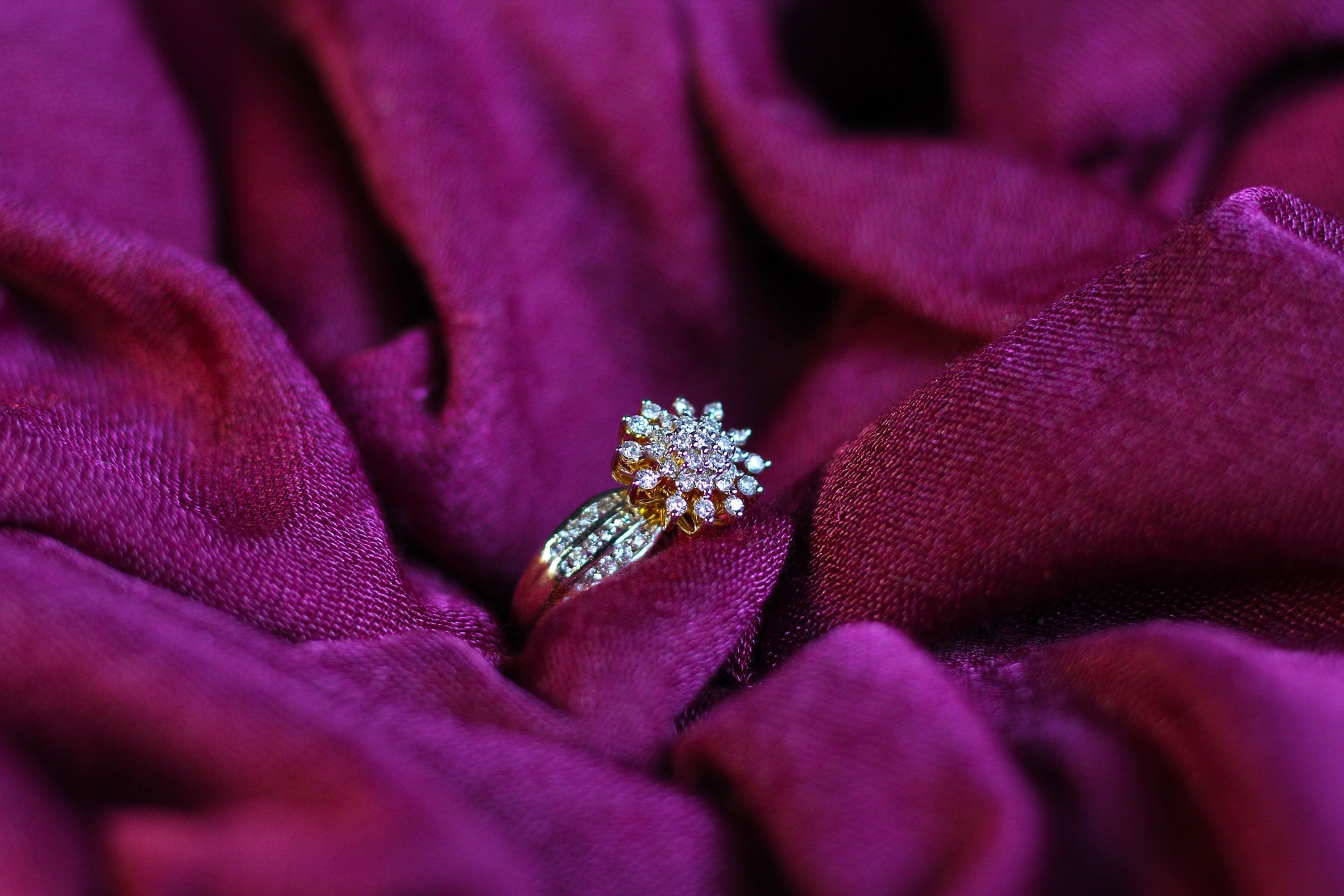
Table of Contents
As Jewelry Shopping Guide editors, we write about things that we love and we think you’ll like too. We often have affiliate partnerships, and may generate some revenue from these links at no cost to you.
Melee diamonds are the unsung heroes of the diamond industry. While some people call melee diamonds “diamond chips”, highlighting the lack of appreciation for these small beauties, jewelry and gemstone professionals appreciate both the great effort that goes into the making of these small diamonds, as well as the value they can add to a piece of jewelry.
Also called accent diamonds, melee diamonds are the small diamonds that you can find on a lot of rings and pieces of jewelry, either accenting the large centerpiece diamond or forming gorgeous shapes in and of themselves.
In this article, we’ll outline why melee diamonds are important and what you need to know about them before you purchase jewelry with melee diamonds.
What are Melee Diamonds?
Melee diamonds are often too small to be used by themselves in jewelry, and often their primary focus is to highlight a large center stone. These small diamonds work beautifully at making bigger diamonds pop or at paving the sides of a larger piece of jewelry.
Take a look at the engagement ring below. How many diamonds do you notice?
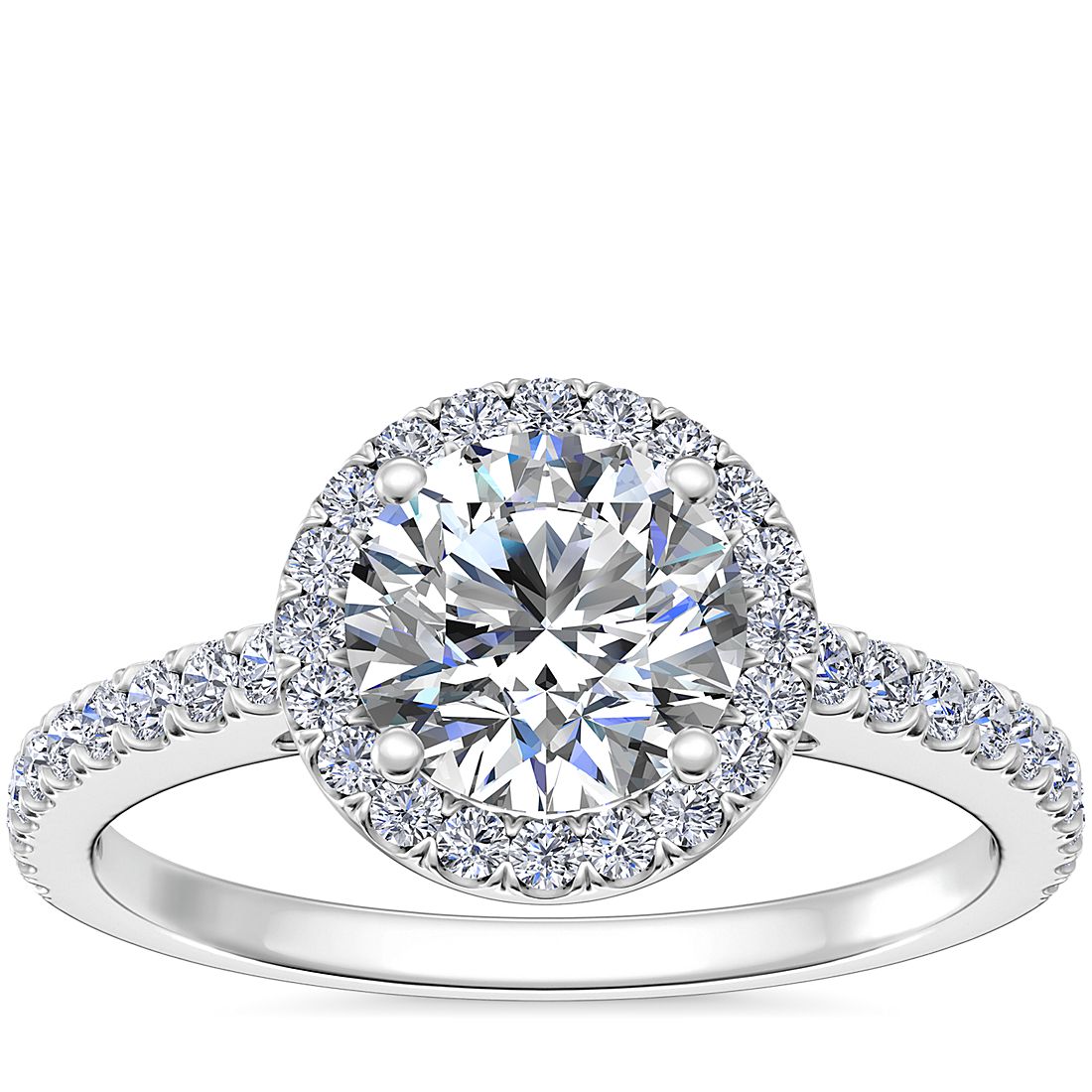
While we immediately notice the center diamond, a closer look will show that there are actually 34 diamonds in total in this ring. The melee diamonds here add a stunning sparkle and beauty to the overall ring, elevating the appearance of the center diamond in the process.
Sometimes melee diamonds are used without a larger centerpiece stone, instead forming various beautiful shapes made from multiple melees.
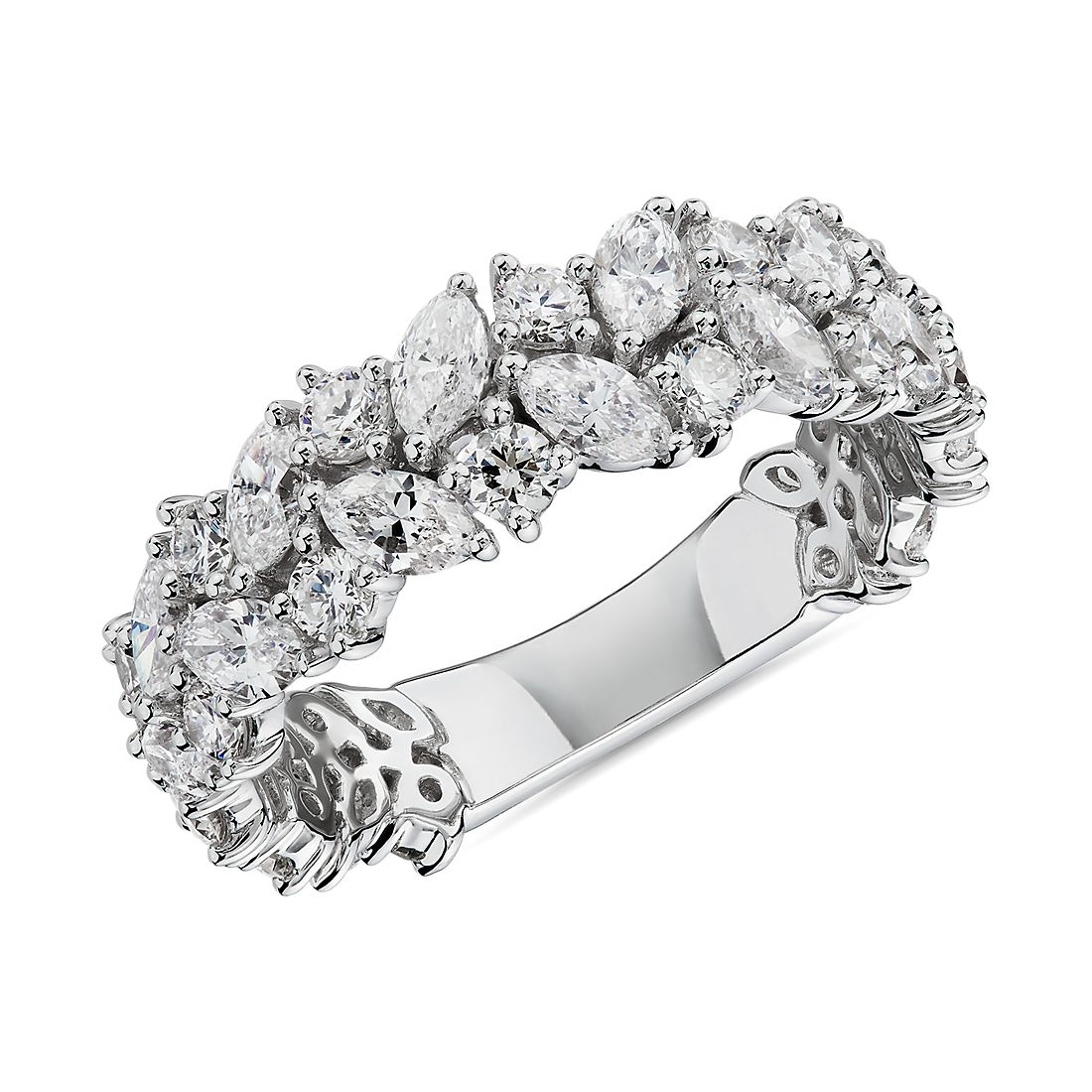
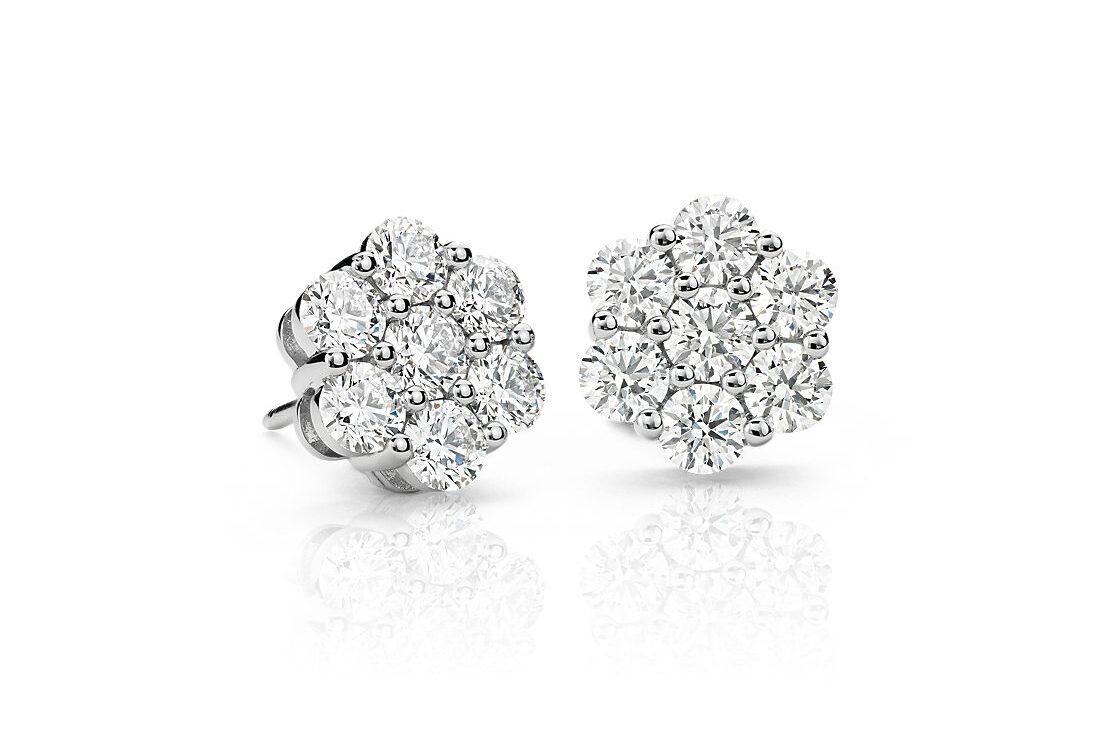
In some bridal rings, such as eternity bands like this one, the entire circumference of the ring is covered with melees. This creates the illusion of a band that is eternal where all diamonds are equal. This is a popular type of wedding band and is highly sought after.
What Does Melee Mean?
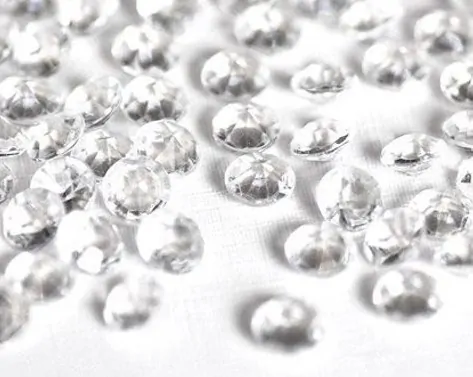
If you’re wondering where the word melee (pronounced mel-ee and not mell-ay) comes from, it has French origins meaning ensemble of diverse elements, from the verb mêler, which means “to mix”. Simply put, the word “melee” here refers to the fact that melee diamonds are typically sold in bulk with lots of little diamonds mixed together.
By today’s standards, however, this can be a bit misleading because such parcels of melee diamonds don’t really comprise “diverse elements” anymore and instead include similar quality standardized diamonds.
Are Melee Diamonds Real?
A common question that pops into a lot of people’s heads is:
Are these small chips even real diamonds?
And that’s an understandable question given the small size of melee diamonds. The fact of the matter is that, unlike big diamond center stones where you are given specifics about the stone’s cut, color, clarity, or carat (the 4Cs), most vendors won’t give you such choices when it comes to the melee diamonds in their jewelry.
This, however, doesn’t mean that melee diamonds aren’t real but is just a consequence of their small size and the resulting economics of melee diamonds.
The reality is that grading such small diamond pieces would be too time-consuming and expensive to the point where the final cost of melees would need to be unreasonably increased. Instead, the standard practice is for melee diamonds to be sold and bought in large parcels of similar quality, with prices based on their carat total weight (CTW).
A word of warning.
Different vendors tend to use melee diamonds of different quality which can be a problem for the consumer. It’s not uncommon for unethical jewelry vendors to lie about the quality of their melee diamonds (e.g. to sell you “J SI2” diamonds but to present them as “G VS2” ones). To avoid being lied to or having to consult with an independent expert, it’s best to do business only with trustworthy and reputable vendors such as White Flash, Brian Gavin, James Allen, and others.
Melee Diamond Prices
In terms of price, melee diamonds can vary quite a bit based on their quality and size, as well as their manufacturer and distributor. While we can’t cover the entire industry in one brief section, here’s a sample of some standard prices for white melee diamonds:
- 01 carat / 1.3 mm – $3.75
- 06 carat / 2.45 mm – $35.00
- 15 carat / 3.3 – 3.5 mm – $120.00
Diamonds increase in price exponentially as the carat weight increases. For example, two .25-carat stones would cost much less than a single .50 diamond. In the case of melee diamonds, these tiny stones don’t cost much at all and yet they add so much beauty to the overall design of the diamond.
Melee Diamonds Sizes
So, how small is a melee diamond?
These small accent diamonds can actually vary quite a bit with the smaller ones being only 0.001 carats in weight (less than a millimeter in diameter) and the largest melee diamonds reaching 0.18 carats in weight (close to 4 millimeters in diameter).
Larger melees are obviously more expensive, but smaller melee diamonds have plenty of uses as well and they too can create beautiful pave, vintage, and designer settings when used in the right manner.
Here is a detailed table with the corresponding weight and size of different melee diamonds:
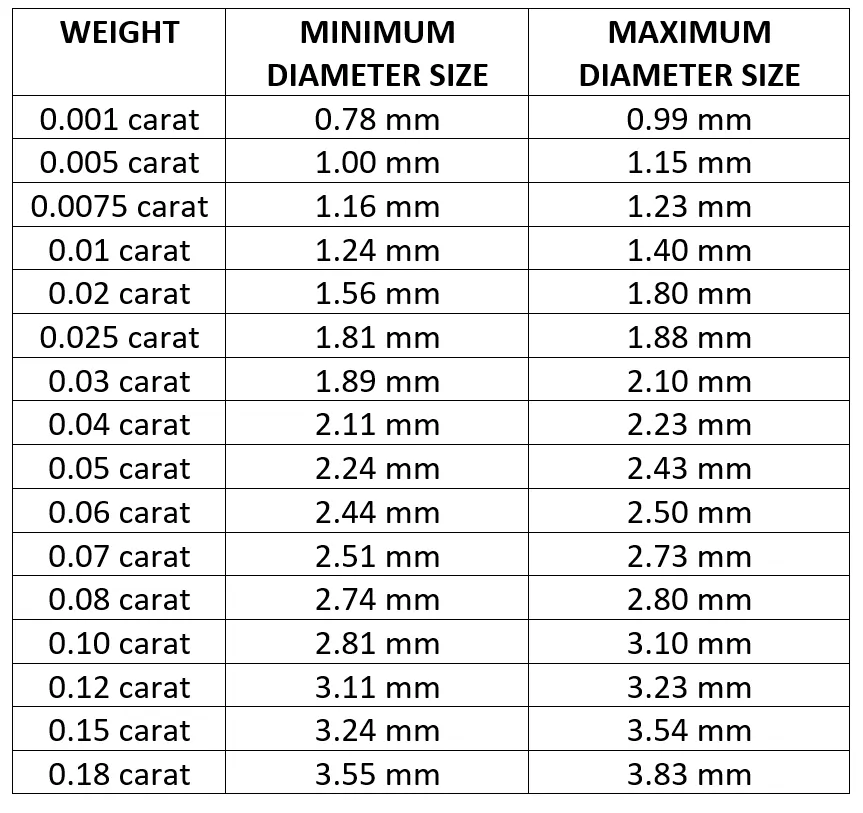
To give you an indication of just how little these diamonds weigh, check out this ring setting. Notice that the total number of diamonds is 20 but the CTW is surprisingly only .14 carats. The overall look appears expensive and sparkly, full of diamonds. You would never have guessed just by looking at it that the carat weight of the melees was actually so low.
Types of Melee Diamonds
When speaking about different melee types, the most common distinction is the way they are cut. Melee diamonds, just like their larger counterparts, can be either single-cut or full-cut. There are also different shapes that a melee diamond comes in.
Single Cut vs. Full Cut Melee Diamonds
A single-cut melee diamond will have 16 facets – 8 on the crown and 8 on the pavilion, just like a larger single-cut diamond. Full-cut diamonds, on the other hand, have a total of at least 57 facets. Single-cut melees are quite rare nowadays with the full cut being the preferred option.
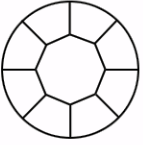
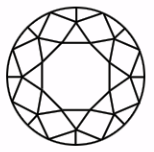
Centuries ago, the single cut was the only option for melee diamonds as they were too small for a full cut by hand. You can still find single-cut accent diamonds but these are most likely only in smaller, boutique melee diamond manufacturers or in the high-end Swiss watches industry where they are highly prized.
Full-cut melee diamonds, on the other hand, make up about 99% of all melee diamonds used in jewelry. This prevalence was enabled by the fact that melee diamonds are no longer cut by hand and are instead done by specialized machines.
It’s easy to see why full-cut melees are so popular. The light performance is much better, as they break the light and sparkle in a more captivating manner.
The Different Shapes of Melee Diamonds
Most people think that melee diamonds are always round, and other shapes are often not considered melee diamonds. Regardless of the shape, the fact remains that these are simply variants of melee diamonds. Here are some common melee shapes:
1. Small Round Melee Diamonds:
The classic round shape is also the most prevalent one. It has a myriad of accent uses whether in a pave or halo setting, or any other.
2. Princess Cut Melee Diamonds:
You’ll sometimes find little square-shaped melees on jewelry, giving the piece a modern look.
3. Tapered Baguette Melee Diamonds:
This unique trapezoid shape is great for following the curve of a piece of jewelry and fits well inside stone or three-stone settings.
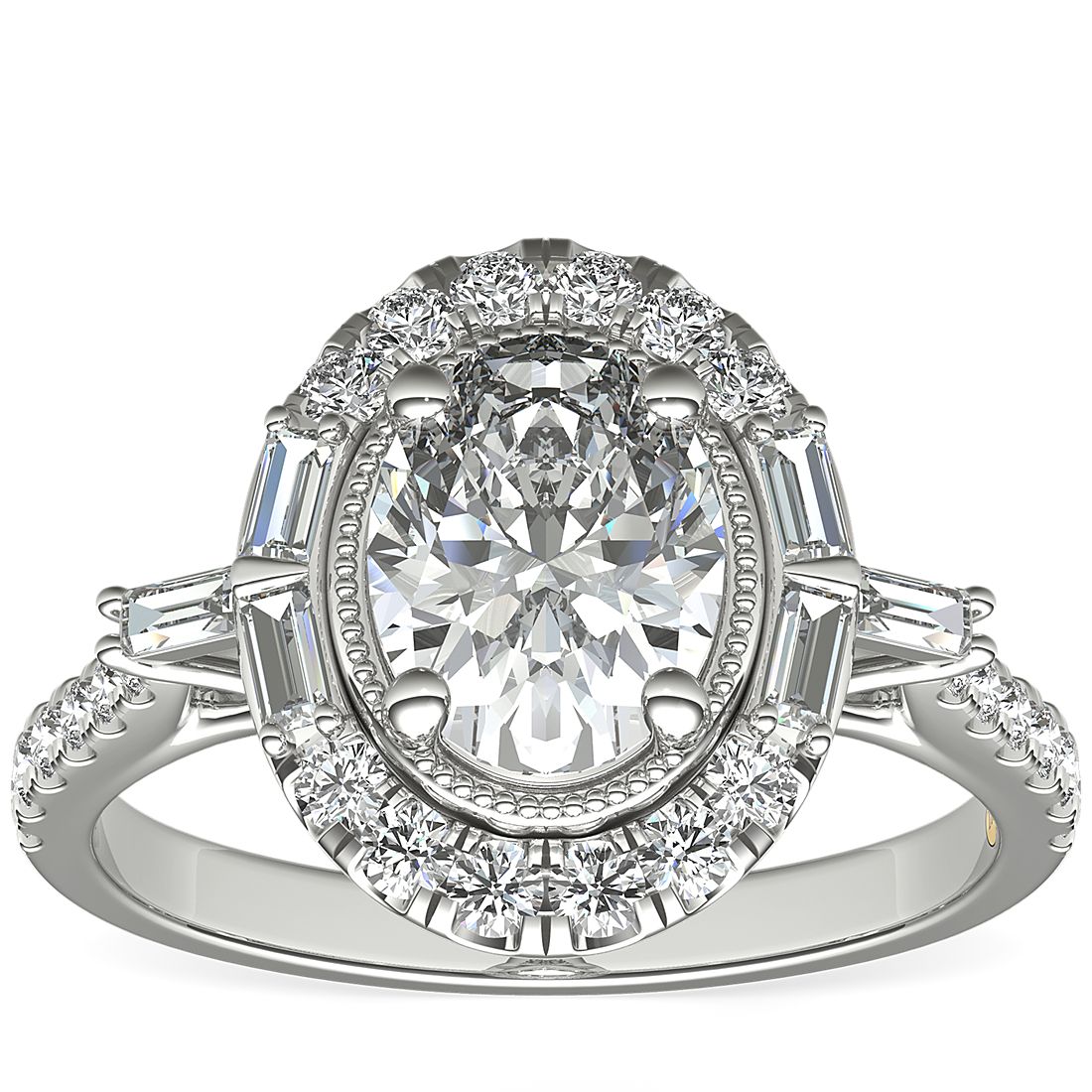
4. Straight Baguette Melee Diamonds:
Similar to tapered baguettes, straight ones are almost perfectly rectangular in shape. They are used in accents to provide symmetry and tend to appear larger than they actually are.
5. Trillion Cut Melee Diamonds:
With their triangular shape, these small diamonds work great as complementary side stones as their shape tends to draw attention to the main stone without overpowering it.
How to Choose Melee Diamonds
As the 4C specifics (cut, color, clarity, and carat) of melee diamonds aren’t typically given to customers, there are three main criteria on which you should choose your future piece of jewelry made with melee diamonds:
1. The reputation or trustworthiness of the vendor
We’ve already mentioned that it’s important to purchase from a trusted vendor with a great track record. You need to ensure that the diamond descriptions are as mentioned and that you aren’t being ripped off.
2. The visual appearance and design of the diamonds
Aesthetically speaking, the one basic key point of accent diamonds is that they should be designed and arranged in such a manner that they highlight the center stone in the composition without overshadowing it. Ensure that the jewelry is of high quality and has been well-crafted, as you don’t want melees to start falling out or get dislodged. However, this all comes down to personal preference, so if you happen to like a piece of jewelry with more prevalent accent diamonds or with no center stone altogether, no one can tell you that you’re wrong.
3. The overall price of the jewelry
If the price of the jewelry is too good to be true, it may just be cubic zirconia instead of actual diamonds. Check that the jewelry price correlates with that of typical melee prices.
Popular Engagement Ring Settings with Melee Diamonds
Melee diamonds can be used in a lot of different ways and settings across multiple types of jewelry. When it comes to engagement rings, in particular, however, there are several main types of settings that utilize melee diamonds to their full potential:
1. Halo Setting
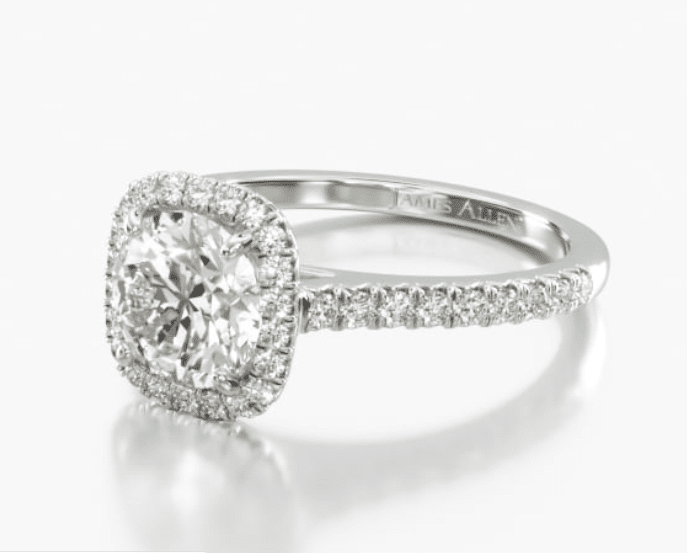
Notice how melees are used to take this ring to the next level of sparkle and beauty. See it on James Allen.
The halo is a clever and cost-effective setting that has melee diamonds arranged in a halo around the larger center diamond. This setting makes the center stone appear larger than it actually is while maintaining an affordable price for the ring.
What’s also great about this setting is that it maintains and even enriches the overall beauty of the ring instead of cheapening it. The sparkle of the melees around the center diamond accentuates the stone’s brilliance.
2. Pave Setting
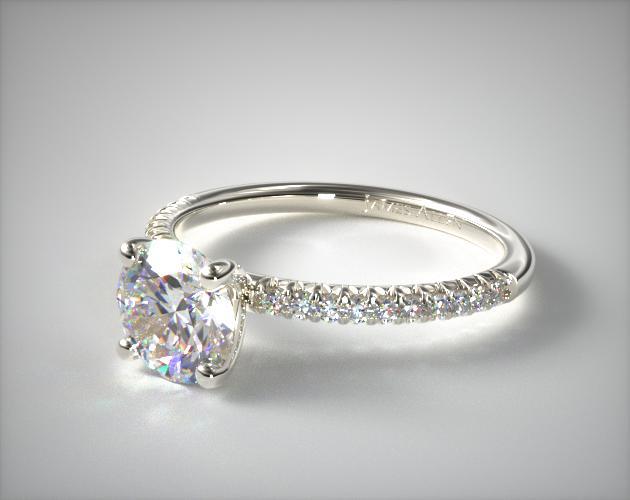
This setting has a purely decorative purpose. The pave setting has melee diamonds lining the shank of the ring, making the whole hoop brighter and more eye-catching. This kind of pave setting is a great way to turn the entire ring into a jewel instead of having it just be a carrier for the larger center stone.
3. Side Stone Setting
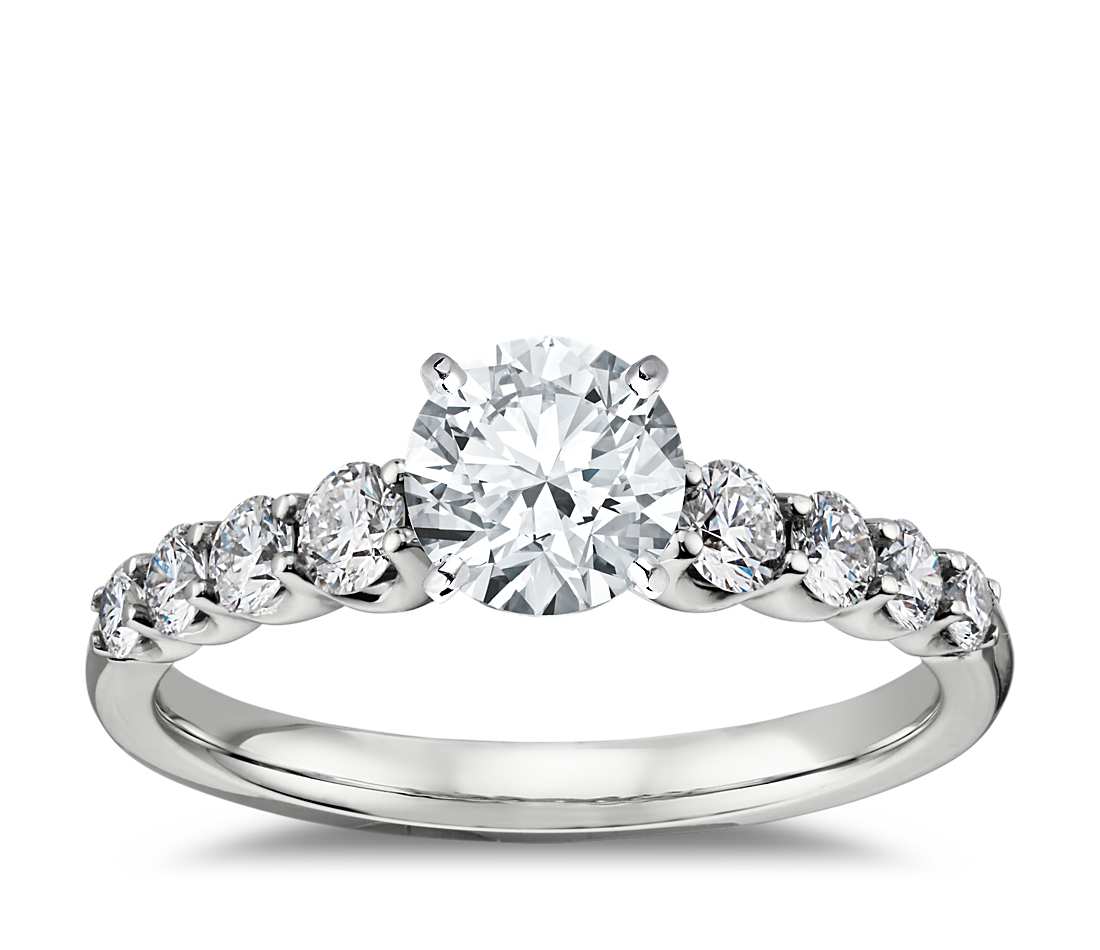
Similar to the pave setting, the side stone setting typically has several larger melee diamonds continuing down the shank of the ring in a single straight line, whereas pave setting usually comprises several parallel set lines of smaller melee diamonds.
4. Three Stone Setting
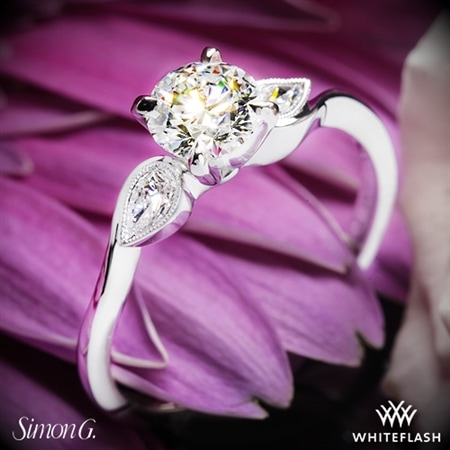
Only done with the largest melee diamonds or with really small round diamonds, three stone settings are made by adding two diamonds on the sides of the center diamond. This forms a simple and clean design of just three stones in total but it can be very impressive and captivating if the stones are of the right quality and design.
Taking Care of Melee Diamonds
If you do decide to opt for an engagement ring with melees, note that the major downside of such accent stones is that over time with wear and tear, they tend to get dislodged or loose. To avoid this happening, ensure that you take care of the ring well and take it to a jeweler periodically to check the integrity of the piece and to fix any loose stones it might have.
It is also more difficult to clean jewelry with melees, as there are more nooks and crannies where dirt can get lodged. We don’t recommend using ultrasonic cleaners as the shock of the vibrations can cause melee diamonds to get loose. It’s best to simply use a mild liquid soap, warm water, and a soft brush to get any dirt and grime out of the setting.
Where to Buy Jewelry with Melee Diamonds
There are many online stores selling diamonds but not all are of the same quality. Here we outline the top four stores that we recommend purchasing your diamond jewelry from.
James Allen
James Allen has a stunning range of melee diamond settings allowing you to view each piece from all angles using their ground-breaking Diamond Display Technology. They also have Diamond Experts on hand to help you through the process.
Blue Nile
Blue Nile’s collection of melee jewelry is affordable and extensive. They’re known for their quality and great customer service.
Brian Gavin
Brian Gavin is famous for its cut quality and for its continuous innovation in perfecting its cut quality. Check out their range of diamond engagement rings and jewelry here.
Whiteflash
For diamonds with the most exceptional cut, choose Whiteflash. Their melee diamonds have great sparkle and their jewelry is stunning.
Summing Up
Hopefully, we’ve shown you why melee diamonds deserve more love and appreciation than they usually get. These small wonders may be cheaper than the popular larger round diamonds and they may be less captivating at first glance but they serve a vital purpose in every piece of jewelry.
Melee accent diamonds can make an otherwise bland ring sparkle and impress, and they can make a smaller round diamond shine with new light. What’s more, when arranged in a beautiful pattern, melee diamonds are even capable of grabbing the spotlight themselves.









